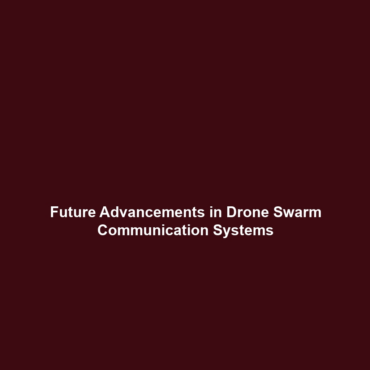<>
Interstellar Probes: Future Concepts for Sending Spacecraft to Nearby Exoplanetary Systems like Proxima Centauri
Introduction
As interest in exoplanets grows, the exploration of these distant worlds presents unprecedented scientific opportunities. Within this context, the concept of Interstellar Probes emerges as a revolutionary approach to sending spacecraft to nearby star systems, including Proxima Centauri, our closest stellar neighbor. These missions aim to capture data that could reveal the potential for life beyond Earth and enhance our understanding of planetary systems. The significance of developing advanced probe technologies cannot be understated, as they are pivotal in the study of exoplanets and advancing our quest for extraterrestrial life.
Key Concepts
Understanding Interstellar Probes
Interstellar probes represent cutting-edge spacecraft designed to travel beyond our solar system and explore nearby stellar systems. Key concepts include:
- Propulsion Technologies: Advancement in propulsion methods, including solar sails and nuclear propulsion, allows probes to achieve higher speeds and cover vast distances within shorter timeframes.
- Communication Systems: Innovative communication technologies will enable data transmission across light-years, ensuring valuable information about exoplanets is returned to Earth.
- Scientific Instruments: State-of-the-art instruments will be essential for conducting in-depth analyses of exoplanetary atmospheres and compositions, seeking biosignatures that indicate the presence of life.
Applications and Real-World Uses
The potential applications of interstellar probes in the study of exoplanets are vast:
- Gathering atmospheric data from exoplanets to assess habitability and environmental conditions.
- Acquiring images and spectra that could identify chemical signatures indicative of life.
- Exploring the dynamics of planetary systems and their formation, which could inform our understanding of the solar system’s evolution.
Current research increasingly focuses on how interstellar probes are used in exoplanet exploration, with discussions surrounding practical applications that could transform humanity’s outlook on space travel and colonization.
Current Challenges
Despite the excitement surrounding interstellar probes, several challenges hinder their development:
- Technological Limitations: Existing propulsion technologies are insufficient for the vast distances involved in interstellar travel.
- Budget and Funding: Interstellar missions require significant financial investment, often competing for limited resources with other scientific endeavors.
- Time Scales: Journeying to Proxima Centauri could take decades or even centuries, raising concerns over mission longevity and scientific relevance.
Future Research and Innovations
Future innovations in the realm of interstellar probes hold great promise for advancing the field of exoplanets study:
- Breakthrough Propulsion Systems: Projects like Breakthrough Starshot aim to develop light sail technology that could propel tiny spacecraft to Proxima Centauri in a matter of decades.
- Advanced Robotics: Enhancements in robotic technologies could enable autonomous probes to conduct complex experiments and analyses without real-time communication.
- Interdisciplinary Research: Collaborations among astrophysicists, engineers, and biologists will drive innovation in probe development and mission strategy.
Conclusion
In summary, the development of interstellar probes for exploring nearby exoplanetary systems such as Proxima Centauri is a cornerstone of modern astrophysical research. These spacecraft have the potential to unlock mysteries about other worlds and even the genesis of life beyond our planet. Continued investment in technology and interdisciplinary collaboration is essential to overcoming current challenges and spearheading the future of exoplanet research. For those interested in the frontiers of human exploration, further reading on related topics such as exoplanet discovery and space exploration initiatives is recommended.


